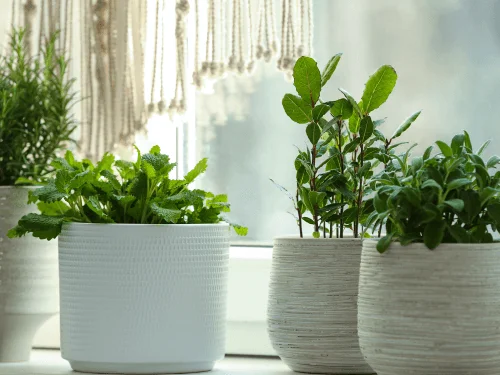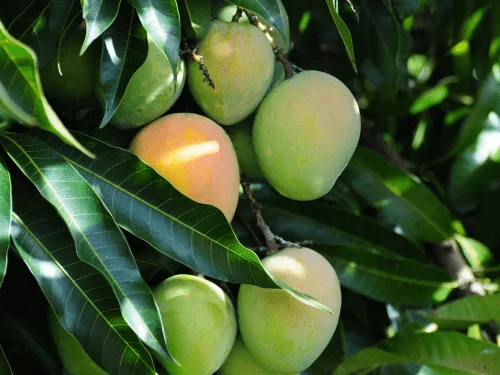Sunflower Garden Ideas: Brightening Your Outdoor Space with Radiant Blooms

1. Can windowsill plants improve indoor air quality?
Yes, several houseplants, including snake plants, pothos, and spider plants, are known for their air-purifying abilities, removing toxins such as formaldehyde and benzene from indoor air. While plants won’t replace proper ventilation, they do contribute to improved air quality and add natural humidity to dry indoor environments.
2. How can I keep my windowsill plants healthy in winter?
During winter, light intensity decreases, and indoor heating can dry the air. Place your plants on windowsills with maximum sunlight, avoid overwatering, and increase humidity using a tray of water or a small humidifier. Sensitive flowering plants like geraniums or African violets may benefit from supplemental grow lights to maintain bloom and foliage quality during shorter winter days.
3. Can I grow flowering and foliage plants together on the same windowsill?
Yes, but pay attention to their light and water requirements. Group plants with similar needs—sun-loving succulents together and shade-tolerant foliage like snake plants and pothos separately. This prevents overwatering or underexposure and ensures all plants thrive. Rotating flowering plants occasionally can also help blooms develop evenly.
Can mango trees be grown in pots?
A: Yes, potted mango trees require large containers with well-draining soil. Regular repotting and sunlight exposure are essential to grow a healthy mango tree in a pot.
Can mango trees grow indoors?
A: Yes, young mango trees can grow indoors in large pots with sufficient sunlight or grow lights. Indoor mango trees may take longer to flower and fruit but are manageable with proper care.
How do I grow mango trees from seed faster?
A: Using warm conditions, consistent moisture, and polyembryonic seeds can speed up germination. Grafting onto seedling rootstocks is another method to grow mango trees faster and ensure quality fruit.
When do mango trees produce fruit?
A: Grafted mango trees may bear fruit in three to five years, while seed-grown trees may take five to eight years. Flowering and fruiting are influenced by climate, sunlight, and proper mango tree care.
1. How long does it take for daisies to bloom?
Plants grown from seed may take several weeks to produce their first flower buds. Most daisy plants will start to bloom in early summer, and with deadheading, they can produce a third blooming later in the season. Shasta daisies and oxeye daisies are especially reliable bloomers that can flower continuously throughout the season if given care tips such as fertilizing and proper watering.
2. Can daisies be grown in pots?
Yes! Potted plants are ideal if you have limited garden space. Make sure the pot has drainage holes and use well-draining garden soil. Daisies are also happy in containers if they get enough hours of full sun. Remember to monitor moisture: avoid too much moisture at the bottom of the pot.
3. What are the best companion plants for daisies?
Daisies pair well with bee balm, echinacea, and zinnias. These companion plants share similar sunlight and watering needs, helping your garden flourish throughout the season. They can also create a beautiful mix of single or double flowers alongside bright white petals of daisies.
This disclosure clearly states that the content creator may earn a commission if readers make a purchase through the provided links. Learn More
Sunflower gardening is a delightful journey that not only brings the vibrant colors of nature into your home but also connects you with the beauty of the outdoors. As someone who cherishes the harmony between daily life and the natural world, the idea of adorning your living space with these radiant flowers is undoubtedly appealing.
Beyond their aesthetic appeal, sunflowers also offer a multitude of benefits for both the environment and the gardener. Their nectar-rich flowers attract pollinators like bees and butterflies, contributing to the health of local ecosystems. Additionally, cultivating sunflowers can be a therapeutic and rewarding experience, allowing you to connect with the rhythms of nature and witness the miracle of growth firsthand.
There are endless possibilities for incorporating sunflowers into your home's landscape. From traditional garden beds to whimsical containers, sunflowers can thrive in a variety of environments, bringing their radiant energy wherever they go.
In this article, I'll be sharing my insights and tips for creating your own sun-kissed paradise. Join me as we explore the art of cultivating sunshine and discover the joys of embracing nature's radiance right at our doorstep.
11 Sunflower Garden Ideas and Tips for a Blooming Oasis
If you're ready to transform your outdoor space into a vibrant haven filled with the golden glow of sunflowers, let me share my top tips on how to create a stunning sunflower garden oasis that will leave you basking in its beauty all season long.
Color Palette Harmony

When planning the color palette for your sunflower garden, it's essential to consider how different hues will interact to create a visually pleasing and harmonious display. By combining bright yellow sunflowers with complementary colors like deep blues, purples, and greens, you can achieve a vibrant and balanced scene. The contrast between the warm tones of the sunflowers and the cooler tones of other plants like delphiniums or irises, or decorative elements adds depth and interest to your garden, making it visually captivating. This harmony in the color palette ensures that the various elements of your garden work together cohesively, creating a striking visual impact.
Texture Variation

Texture variation in your sunflower garden involves incorporating plants with diverse textures to enhance its visual appeal. By pairing the smooth, velvety petals of sunflowers with plants that have contrasting textures, such as feathery grasses, fuzzy lamb's ears, or delicate ferns, you can create captivating contrasts that add depth and dimension to your garden. You can do close-up shots capturing the intricate details and tactile qualities of these plants to further enhance the visual interest, inviting viewers to explore and immerse themselves in the beauty of nature.
Seasonal Interest

Design your sunflower garden to offer year-round visual interest, making it a photogenic marvel. Incorporate plants with varying bloom times, foliage colors, and seasonal highlights to ensure a dynamic and ever-changing landscape. From the vibrant blooms of summer sunflowers to the rich hues of autumn foliage and the delicate frost-kissed beauty of winter, each season brings unique aesthetics that showcase the garden's evolving splendor.
Variety Selection

When selecting sunflower varieties, consider a range of factors to create a diverse and visually captivating garden. Explore options beyond the traditional yellow sunflowers, such as rich reds, deep oranges, and even bi-color blooms. Varieties like 'Autumn Beauty' or 'Velvet Queen' offer a stunning array of colors to choose from. In addition to colors, pay attention to heights and bloom sizes. Dwarf sunflowers like 'Sunny Smile' or 'Teddy Bear' are perfect for edging garden beds or lining pathways, while towering giants like 'Mammoth' or 'Russian Giant' make impressive focal points. Incorporating a mix of sizes and colors adds depth and interest to your garden, ensuring there's always something new to discover.
Sunflower Garden Layout

Deliberate planning of your sunflower garden layout can enhance its overall impact. Consider the natural flow of your space and how the sun moves throughout the day. Plant taller varieties towards the north or west side of your garden, ensuring they don't shade shorter plants. Against a backdrop like a wall or fence, tall sunflowers create a dramatic effect, while shorter varieties in the foreground maintain visibility and balance. Experiment with curved or staggered planting arrangements to avoid a rigid look and encourage a sense of movement and vitality within your garden.
Companion Planting

Pairing sunflowers with compatible companion plants fosters a harmonious and thriving ecosystem in your garden. Marigolds not only complement sunflowers aesthetically but also repel pests with their strong scent, protecting your garden naturally. Zinnias and cosmos offer a burst of color that contrasts beautifully with sunflowers, while attracting butterflies and other pollinators. Lavender not only adds fragrance but also repels pests and attracts beneficial insects like bees. Interspersing these plants throughout your sunflower garden creates a visually stunning and ecologically beneficial landscape.
Succession Planting
Extend the blooming season of your sunflowers by staggering planting times throughout the spring and early summer. Begin with early-blooming varieties like 'Lemon Queen' or 'Sunset' and continue planting every few weeks until mid-summer. This ensures a continuous display of blooms, providing visual interest and attracting pollinators for a longer duration. As earlier flowers fade, later-planted sunflowers will take their place, maintaining color and vitality in your garden from early summer well into fall.
Container Gardening

For those with limited outdoor space, container gardening offers a practical solution to enjoy sunflowers on patios, balconies, or even rooftops. Opt for large containers with good drainage to accommodate the deep root systems of sunflowers. Compact or dwarf varieties like 'Music Box' or 'Little Becka' are ideal for container gardening, providing manageable size without sacrificing beauty. Arrange containers strategically to create focal points or borders, mixing sunflowers with trailing vines or cascading flowers for added visual interest.
Vertical Gardening

Introducing vertical elements to your sunflower garden not only maximizes space but also adds drama and dimension to your outdoor space. Install trellises or stakes to support tall sunflower varieties like 'Kong' or 'Skyscraper', training them to grow upwards for a striking visual effect. Vertical gardening opens up opportunities for creative sunflower landscape designs, such as planting sunflowers in tiers or combining them with climbing vines like morning glories or sweet peas. This not only optimizes space but also creates a dynamic and visually appealing garden display.
Edging and Borders

Utilize sunflowers to define borders and pathways in your garden, adding structure and color to your outdoor space. Planting sunflowers along the edges of garden beds or lining pathways creates a natural and inviting border, guiding visitors through the garden while adding a cheerful ambiance. Mix different sunflower varieties to create depth and texture, alternating heights and colors for a dynamic effect. Consider planting shorter varieties like 'Suntastic Yellow' or 'Orange Hobbit' along the front of borders, gradually transitioning to taller varieties like 'Evening Sun' or 'Sunzilla' towards the back for a layered and visually appealing composition.
Natural Screens and Privacy

Strategic placement of sunflowers can serve as natural screens or privacy barriers, enhancing the functionality and beauty of your outdoor space. Planting tall sunflower varieties along property lines or near seating areas creates a sense of seclusion and intimacy, shielding from prying eyes or undesirable views. Consider planting sunflowers in clusters or rows to create denser screens, maximizing coverage and visual impact. Incorporate other tall plants or ornamental grasses for added texture and dimension, further enhancing the privacy and tranquility of your outdoor sanctuary.
Frequently Asked Questions and Answers:
Q: What are the best varieties of sunflowers for a garden?
A: Some popular garden sunflower varieties include 'Russian Giant', 'Lemon Queen', 'Mammoth', and 'Autumn Beauty'. They are popular because of their bright, cheerful appearance, which adds a vibrant splash of color to any garden or landscape. Their large, showy flowers are eye-catching and instantly uplift the mood of any space. So, choose varieties based on the size of your garden space and your desired aesthetic.
Q: What are some companion plants for sunflowers?
A: Sunflowers pair well with many garden plants, including marigolds, zinnias, cosmos, and tall ornamental grasses. These companion plants can add color, texture, and biodiversity to your sunflower garden.
Q: Can I grow sunflowers in a small garden or balcony?
A: Yes, you can grow sunflowers in a small garden or balcony by choosing dwarf or compact varieties specifically bred for small spaces. Plant them in containers or small garden beds with well-draining soil, and provide support if needed.
Q: Are there any sunflower varieties that are particularly drought-tolerant?
A: While sunflowers are relatively drought-tolerant once established, some varieties, such as 'Sunny Smile' and 'Solar Flash', are known for their ability to withstand dry conditions better than others. Check with your local nursery or seed supplier for recommendations suited to your climate.






